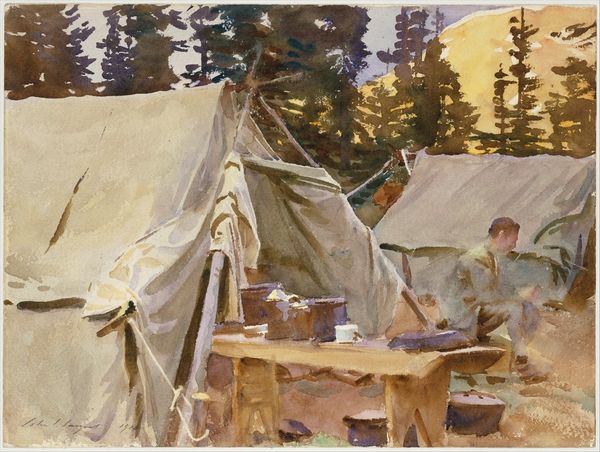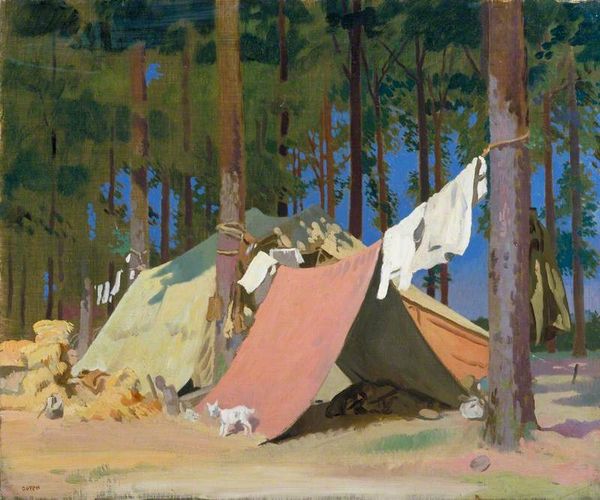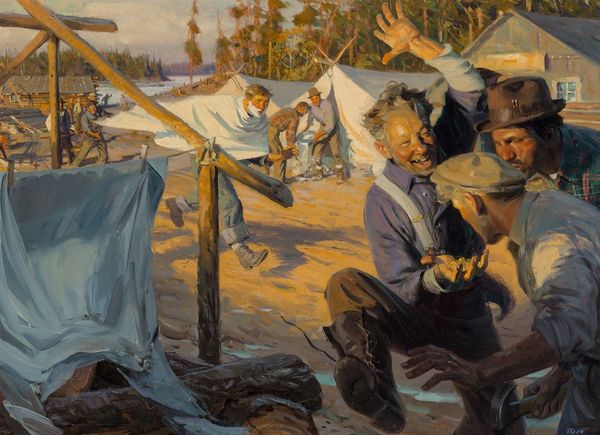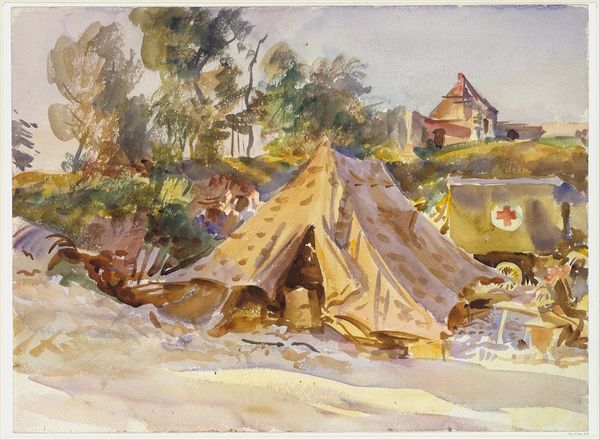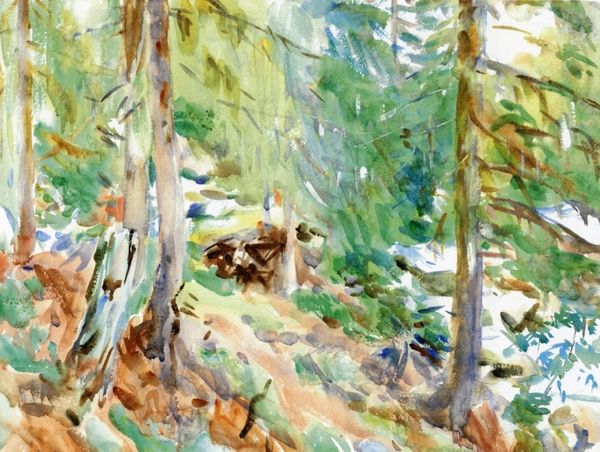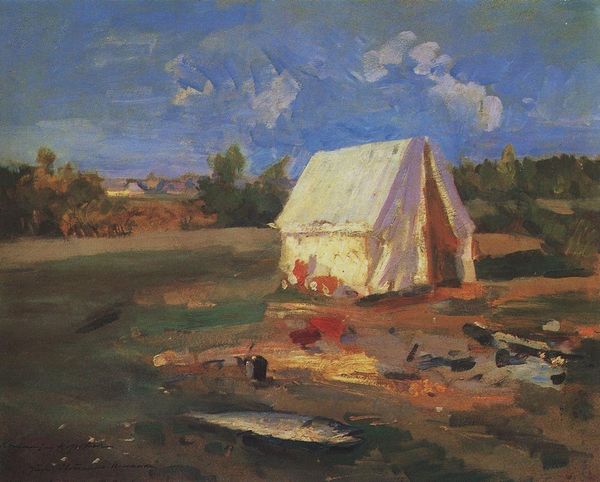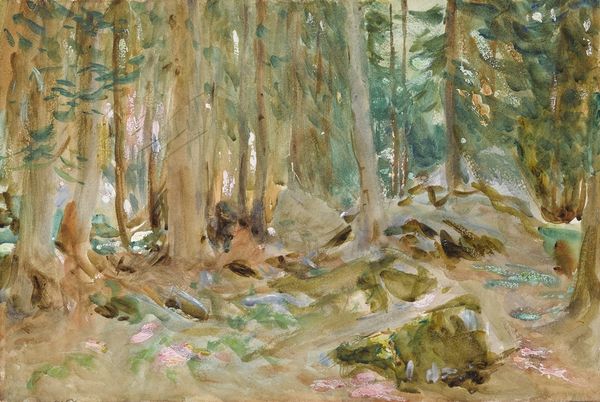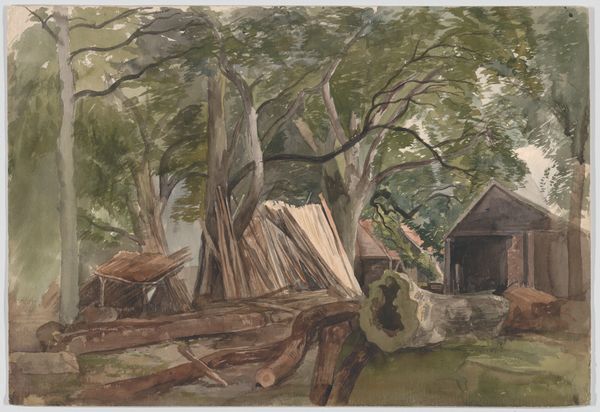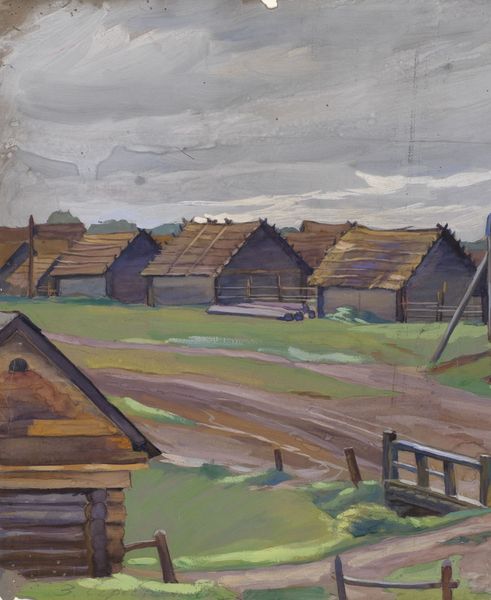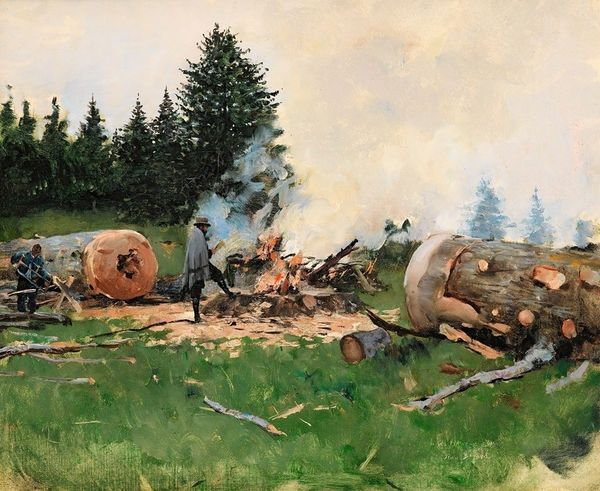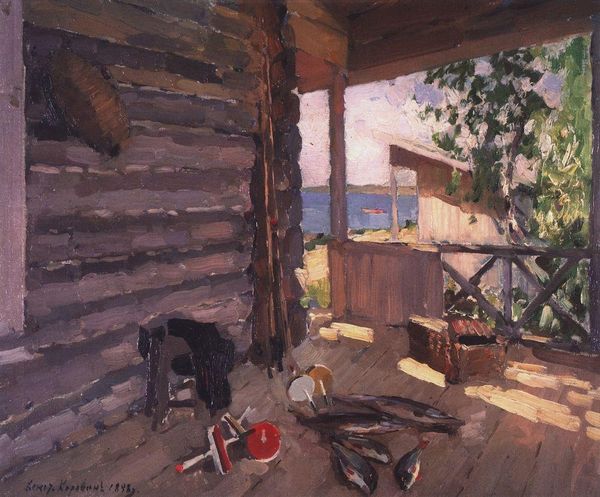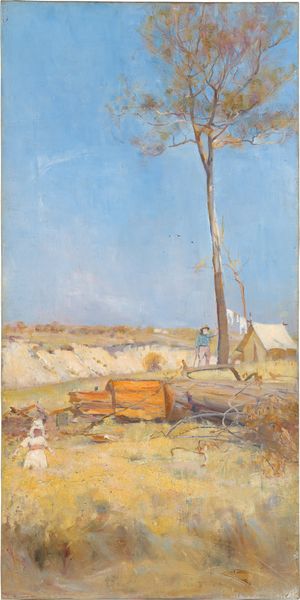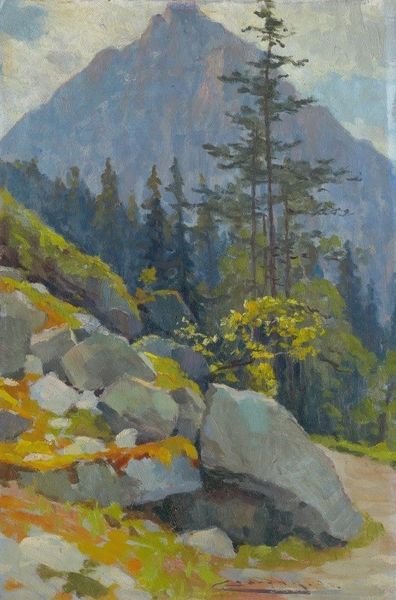
Copyright: Public Domain: Artvee
Editor: This is John Singer Sargent’s “A Tent in the Rockies,” painted in 1916, a watercolor that gives off such a feeling of transient calm. It’s so interesting to see this painter, who is often associated with portraits, take on the landscape like this. What do you see in this piece? Curator: Sargent, often seen as a chronicler of elite society, engaged with themes of leisure and travel, reflective of early 20th century social shifts. How do you interpret the contrast between the wild, untamed landscape and the tent, a symbol of domesticity and temporary settlement? It makes you wonder about land usage, ownership, and the mythology of the American West, doesn’t it? Editor: Absolutely! It seems to both celebrate and subtly question our relationship to nature. I see how the light filters through the trees. Curator: Exactly, that impressionistic touch gives the painting a sense of immediacy, of capturing a fleeting moment. It begs the question: Whose experience is centered here? Considering issues of access and privilege is essential in understanding these representations. What narratives are missing? Editor: So, by looking at this landscape we should be asking questions about who gets to access these spaces, who has the means to travel, who actually has claim to it? Curator: Precisely! And how is the wilderness constructed and consumed as a cultural ideal? Thinking about the relationship between landscape painting, colonialism, and environmental justice helps us contextualize Sargent's work critically. Editor: That’s given me a totally different perspective. Thanks! Curator: My pleasure. Always remember art reflects its socio-political contexts. Keep questioning.
Comments
No comments
Be the first to comment and join the conversation on the ultimate creative platform.
